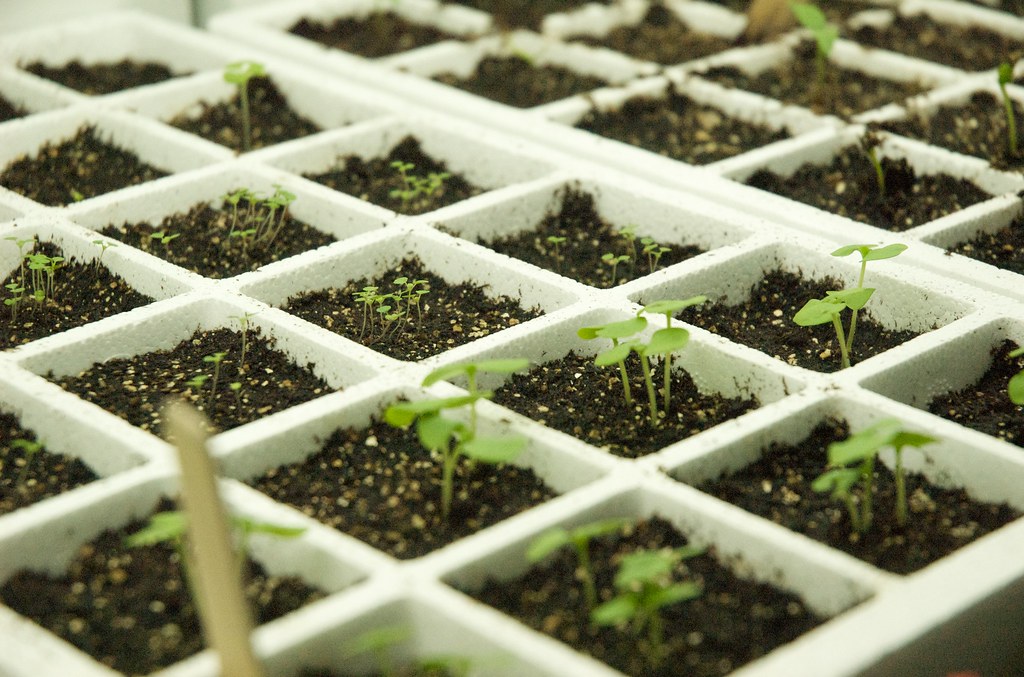Talking plants
University of Minnesota, Clay County
Starting vegetable and flower plants from seed has its advantages. The most notable being the greater number of varieties to choose from. Besides seed, only a few other supplies are needed, such as potting medium, containers, and a light source.
Generally, the best seed starting medium is one that contains no true soil, often called a soilless mix. Commercially available seed starting mixes are usually composed of peat, vermiculite, and maybe some perlite. These mixes are sterile, lightweight, contain no weed seed, and readily available to the home gardener.
Many types of containers can be used for seed starting. If you like to recycle, try using gallon milk jugs and cut the top off so the bottom measures two to three inches in height. You could also use plastic cups or egg cartons. Traditional containers made of plastic or biodegradable materials can be found at your local garden center. It is important that seeding containers have drain holes. If needed, punch or cut holes in the bottom to allow excess water to drain.
Fill containers with potting mix and lightly tap on a table to settle. Thoroughly water the potting mix and add more if needed. Look at the seed package to determine the proper planting depth. After planting the seed, lightly water to ensure good seed to soil contact. Cover seed containers with loose fitting plastic wrap or some other transparent material. Doing so will help keep the seeds moist. Remove the cover after seeds have emerged.
Seedlings generally need more light than a window can provide. However, large south facing windows may be suitable. If light is in short supply, use a light-emitting diode (often referred to as LED) or fluorescent shop light suspended over your seedlings. Ideally, the light should be two inches above the plants. Plants will need approximately 12 to 16 hours of light each day. A simple way to accomplish this task is to plug your light into a timer so the light will turn on and off automatically.
Seed should not be started too early or too late. Starting too early results in overgrown plants that usually do not grow well when planted outside while starting too late will yield small plants that may not survive when planted outside. Early February is the time to seed geranium and onion. Early March is the time to seed petunia, broccoli, and cauliflower.
University of Minnesota,Clay County 218.299.5020.
Check out our website at https://local.extension. umn.edu/local/clay


